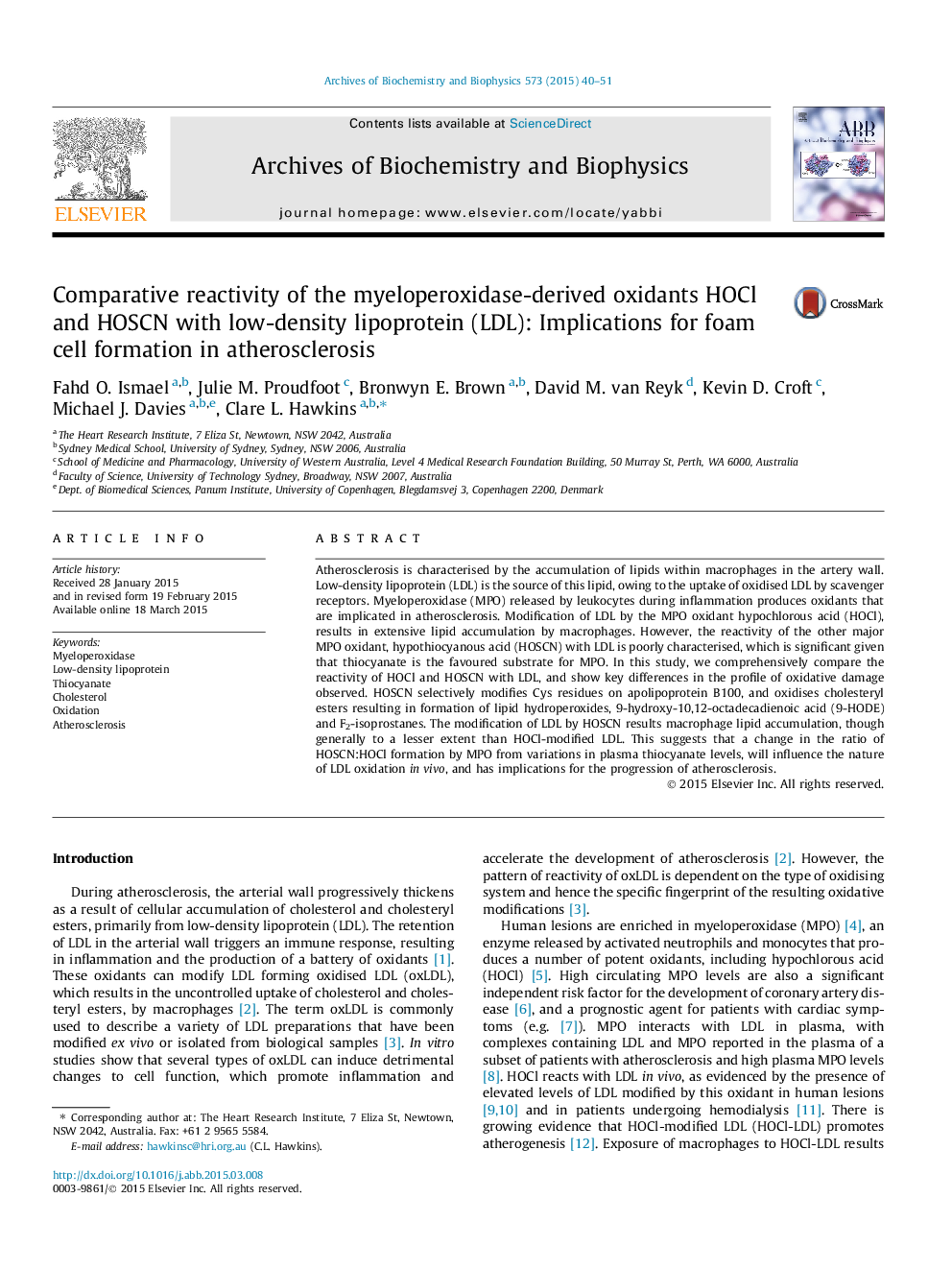| کد مقاله | کد نشریه | سال انتشار | مقاله انگلیسی | نسخه تمام متن |
|---|---|---|---|---|
| 1924952 | 1536329 | 2015 | 12 صفحه PDF | دانلود رایگان |

• HOSCN induces modification of both the protein and lipid components of LDL.
• LDL protein oxidation with HOSCN is less extensive but more specific than HOCl.
• Greater oxidation of LDL lipids was observed with HOSCN compared to HOCl.
• HOSCN formed modified LDL particles that are taken up by macrophages.
• SCN− modulates the extent of LDL oxidation and foam cell formation by MPO oxidants.
Atherosclerosis is characterised by the accumulation of lipids within macrophages in the artery wall. Low-density lipoprotein (LDL) is the source of this lipid, owing to the uptake of oxidised LDL by scavenger receptors. Myeloperoxidase (MPO) released by leukocytes during inflammation produces oxidants that are implicated in atherosclerosis. Modification of LDL by the MPO oxidant hypochlorous acid (HOCl), results in extensive lipid accumulation by macrophages. However, the reactivity of the other major MPO oxidant, hypothiocyanous acid (HOSCN) with LDL is poorly characterised, which is significant given that thiocyanate is the favoured substrate for MPO. In this study, we comprehensively compare the reactivity of HOCl and HOSCN with LDL, and show key differences in the profile of oxidative damage observed. HOSCN selectively modifies Cys residues on apolipoprotein B100, and oxidises cholesteryl esters resulting in formation of lipid hydroperoxides, 9-hydroxy-10,12-octadecadienoic acid (9-HODE) and F2-isoprostanes. The modification of LDL by HOSCN results macrophage lipid accumulation, though generally to a lesser extent than HOCl-modified LDL. This suggests that a change in the ratio of HOSCN:HOCl formation by MPO from variations in plasma thiocyanate levels, will influence the nature of LDL oxidation in vivo, and has implications for the progression of atherosclerosis.
Figure optionsDownload high-quality image (131 K)Download as PowerPoint slide
Journal: Archives of Biochemistry and Biophysics - Volume 573, 1 May 2015, Pages 40–51